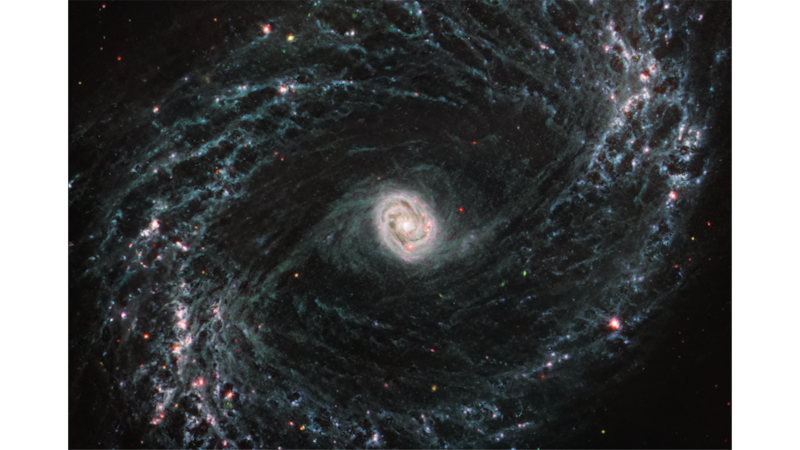An instrument built by Irish scientists have revealed views of the universe that astronomers have described as “astounding”.
The James Webb Space Telescope (JWST), the most powerful telescope ever built, has been looking at 19 neighbouring galaxies relative closely to our own Milky Way galaxy.
They are doing so with the Mid-Infrared Instrument (MIRI) built by scientists at the Dublin Institute for Advanced Studies (DIAS). Visible light makes up a tiny portion of the electromagnetic spectrum in terms of the range of wavelengths, but it is the only part the naked eye can see.
Spiral galaxies were first discovered by an Irishman, the Earl of Rosse, in 1845 when he observed the Whirlpool galaxy for the first time. So far they have been observed in the visual spectrum, but seeing them in the infrared spectrum has given a completely new perspective on them.
READ MORE
The Milky Way is a spiral galaxy but we cannot observe it objectively because we are in the middle of it.
“It is easier to look at galaxies near us and try to understand what is going on in terms of new stars forming in our own galaxy,” said Prof Tom Ray of DIAS and Trinity College Dublin who is one of the co-principal investigators of the MIDI.
“The MIRI works on much longer wavelengths and can penetrate through so much dust and gas. We can see massive stars forming and they form huge bubbles of gas. We can see it because we can see through the gas. If you looked at it through the optical, you wouldn’t actually see that structure.”

Prof Ray said stars are being formed and dying in galaxies all the time – at the rate of approximately one per year which is tiny given that there are approximately 200 billion stars in our own galaxy alone, but the universe is slowly changing all the time.
“We want to study how those stars form, but we already know that most stars have their own planetery system,” he said.
“By looking at new stars forming, we can actually work out how the planets form. That is an ongoing process.”
The JWST is positioned 1.5 million kilometres from Earth where the typical temperature is minus 276C, but the MIRI has to be cooled down even further.
It is a joint programme with Nasa, the European Space Agency (ESA) and the Canadian Space Agency. They described the results as “astounding”.
The team is studying a diverse sample of 19 spiral galaxies, and in Webb’s first few months of science operations, observations of five of those targets – M74, NGC 7496, IC 5332, NGC 1365, and NGC 1433 – have taken place.
The Milky Way is only one of billions of galaxies in the known universe. There are so many that some like NGC (New General Catalogue) 7496, NGC 1364 and NGC 1433 are untitled as nobody has got around to naming them yet.
The results of the MIRI search is already leading to the authorship of dozens of scientific papers.
“The clarity with which we are seeing the fine structure certainly caught us by surprise,” said team member David Thilker of Johns Hopkins University in Baltimore, Maryland.
“We are directly seeing how the energy from the formation of young stars affects the gas around them, and it’s just remarkable,” said team member Erik Rosolowsky of the University of Alberta in Canada.













